Weed removal: Tips for a pristine garden
Dandelions – these and other wild-growing plants are permanent guests in our gardens. But not all weeds are the same. By definition, a weed is a plant that grows among cultivated plants – those you deliberately sow and cultivate – and hinders their growth. However, weeds are actually wild herbs or wildflowers that are considered medicinal plants, among other things. They also make a garden an insect- and especially bee-friendly place, so you can definitely dedicate a small corner of your garden to them. Nonetheless, to ensure that the fruit or vegetables in your bed or even your lawn can thrive perfectly and grow optimally, you should remove unwanted weeds. You should also pull out the weeds in the joints of your paving stones for aesthetic reasons.
How to proceed, which home remedies you can use, and what you should avoid, we will show you in this blog post.
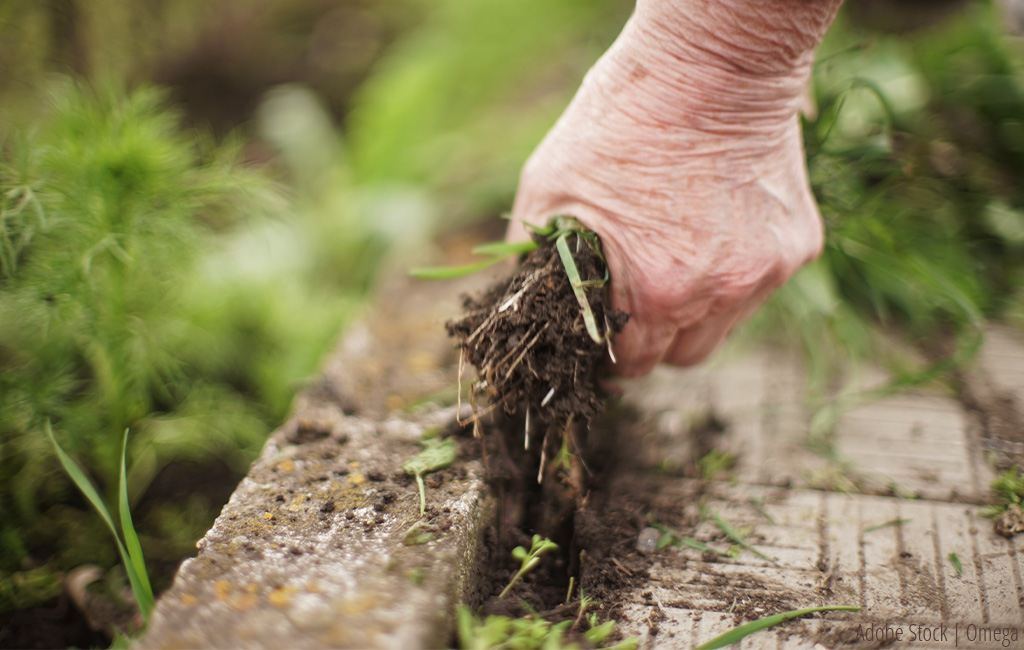
What exactly is a weed?
It spreads quickly, displaces other plants, and is primarily one thing: unwanted. Weeds are mainly characterised by their rapid growth and high resilience. These plants are heat-resistant and easily survive the winter. Therefore, it often seems difficult, if not impossible, to completely eradicate weeds.
There are two types of weeds that are native to our gardens:
- Root weeds: These include, for example, field mint, nettles, thistles, plantain, or clover. They are primarily characterised by resilient roots that spread under the entire lawn or driveway and are not even deterred by paths or paving stones. To remove this type of wild plant, the entire root must be extracted from the soil. Even severed root systems grow back into multiple plants.
- Seed weeds: Plants like dandelions, chickweed, goosefoot, celandine, or shepherd's purse produce numerous seeds that can be easily spread over long distances by wind or animals. These seeds can survive in the soil for decades until it is time to germinate. Therefore, weeds also appear in newly planted beds or newly laid lawns, as the soil is turned over and "old" seeds are brought to the surface. To combat this type of weed in the long term, it is important to remove the weed before it first blooms.
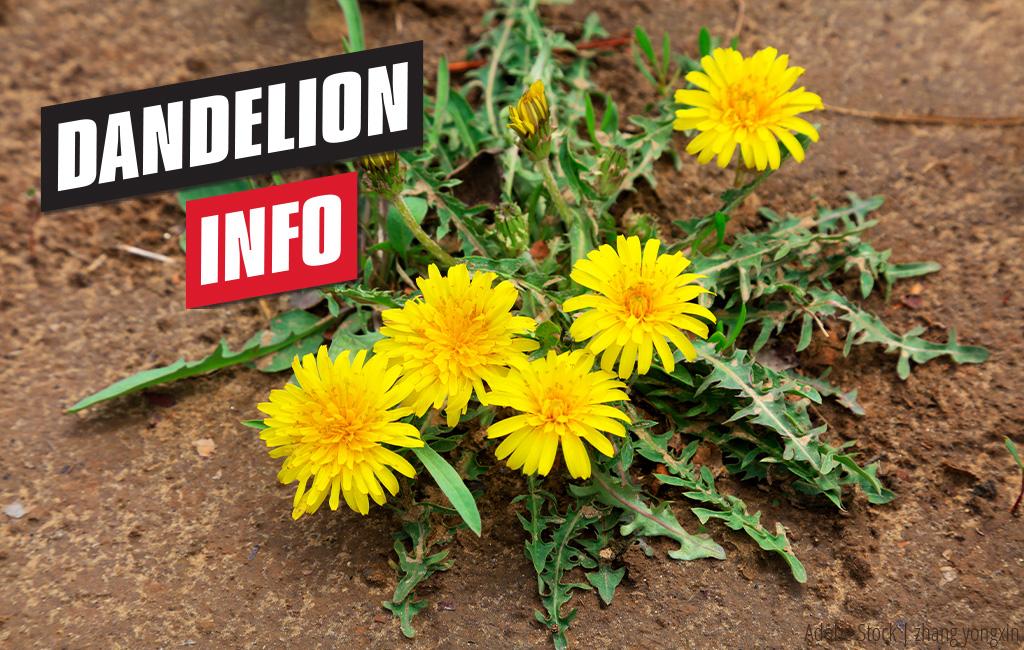
BY THE WAY
Dandelions can be classified as both types because, in addition to their "puffball," they also develop a strong root system. Their so-called taproot anchors them firmly in the ground, and it must be removed during weed control.
Due to its robustness and rapid spread, weeds can pose a serious threat to cultivated and useful plants, as they deprive them of essential resources such as water, nutrients, and light. While you carefully select and strategically place perennials, shrubs, and other plants in your garden, weeds thrive wherever they feel particularly comfortable and are absolutely indiscriminate. However, your cultivated plants require special attention to grow perfectly, whereas weeds usually thrive despite all adversities. Therefore, it is important to regularly remove weeds from your lawn or bed.
How do I remove weeds from lawns and joints?
First and foremost: The use of chemical weed killers, known as herbicides, is prohibited or heavily restricted for private use in Germany according to the Plant Protection Act. This is especially true when used around paving stones, paved paths, terraces, sidewalks, or driveways. In general, weed killers must not be used on sealed surfaces, as they can be easily washed away and spread elsewhere. Chemical agents can contaminate groundwater and surface water. For this reason, you should definitely rely on other methods to eliminate weeds.
Vinegar, salt, or other home remedies are also prohibited according to the Plant Protection Act and must not be used. Herbicides must be officially approved, and homemade remedies are not.
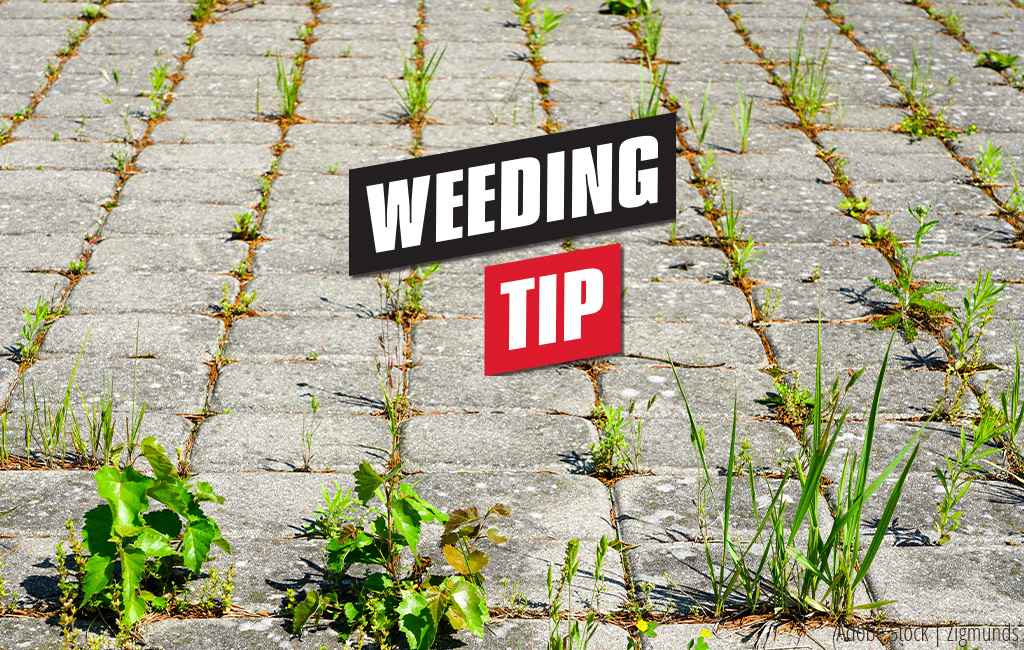
TIP
It is best to weed – whether in your lawn or in the joints between your paving stones – after watering or after rain. The soil is loosened by the moisture, and the roots of the plants can be removed more easily.
To achieve the best results when weeding, it should be done regularly. The longer the wild plants have to root in your soil, the harder it will be to get rid of them.
Thermal weed removal
Occasionally, you see your neighbour handling a type of blowtorch in their driveway and wonder, “What is he doing?” Quite simply, he is fighting weeds. A quick and easy method to get rid of unwanted plants is by using heat. This method is particularly effective for large areas. However, this only kills the plants on the surface, and they grow back from the roots. Boiling water, on the other hand, penetrates somewhat deeper into the soil and kills the roots. Additionally, the direct heat also destroys the seeds of the plants, preventing them from spreading further. The following methods have proven effective:
- Flame weeder: This device, resembling a flamethrower, tackles weeds with ease. Simply pass the flame over the weeds. The plant does not need to burn; a short burst of heat is sufficient to kill the weed. Afterwards, the remnants can be easily swept away. However, caution is necessary with this method, and proper, responsible use of this device is essential. If used carelessly, cultivated plants can also be destroyed by the heat. You should also avoid using fire during a drought period due to the high risk of fire, which can endanger buildings and animals.
- Hot water: You can simply pour boiling or very hot water over the wildflowers for about 10 seconds. This destroys the plant's cell structure, making photosynthesis impossible. Additionally, the water seeps into the soil and damages the roots as well.
Tip: It is best to use pasta, rice, or potato water. The starch contained in it clogs the plant's pores (stomata). This prevents the plant from “breathing” and causes it to die. - Electric thermal devices: An electric weed killer uses electricity to generate a type of heat shock in the plant. This also destroys the plant's cells, causing it to die. The effect is only visible after some time, but afterwards, the weeds can be easily removed.
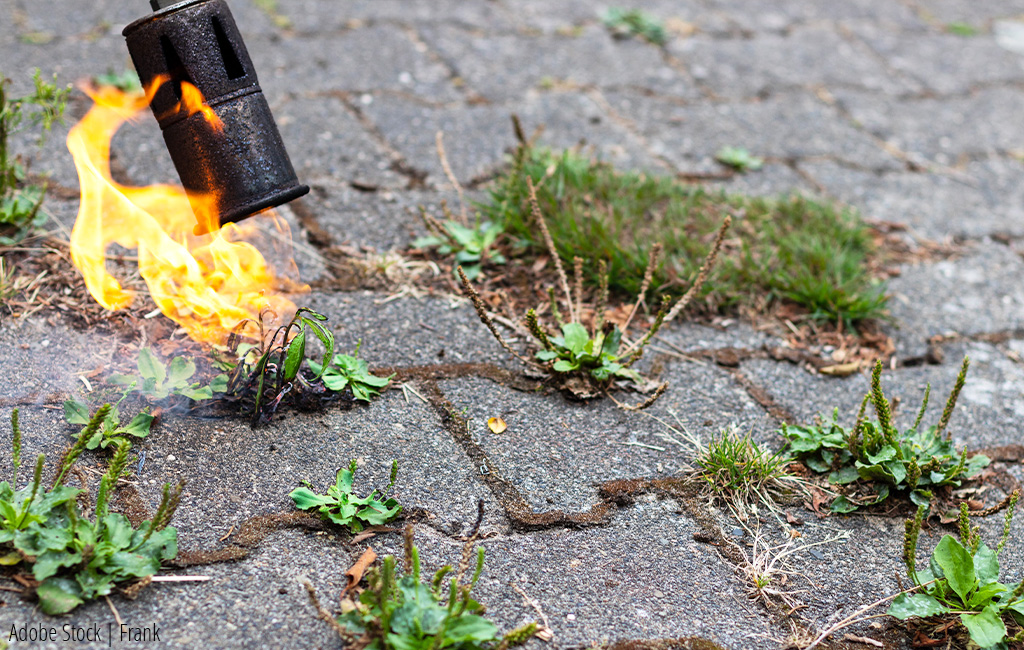
Mechanical weed control
The most environmentally friendly method to remove weeds in your garden or driveway is classic manual labour. This approach is sometimes even more effective than using heat. With the right hand tools, you can grab and pull out the unwanted wild plants directly by the roots. For larger areas in garden maintenance, such as your lawn or beds, as well as for the joints between your paving stones, the following tools are suitable:
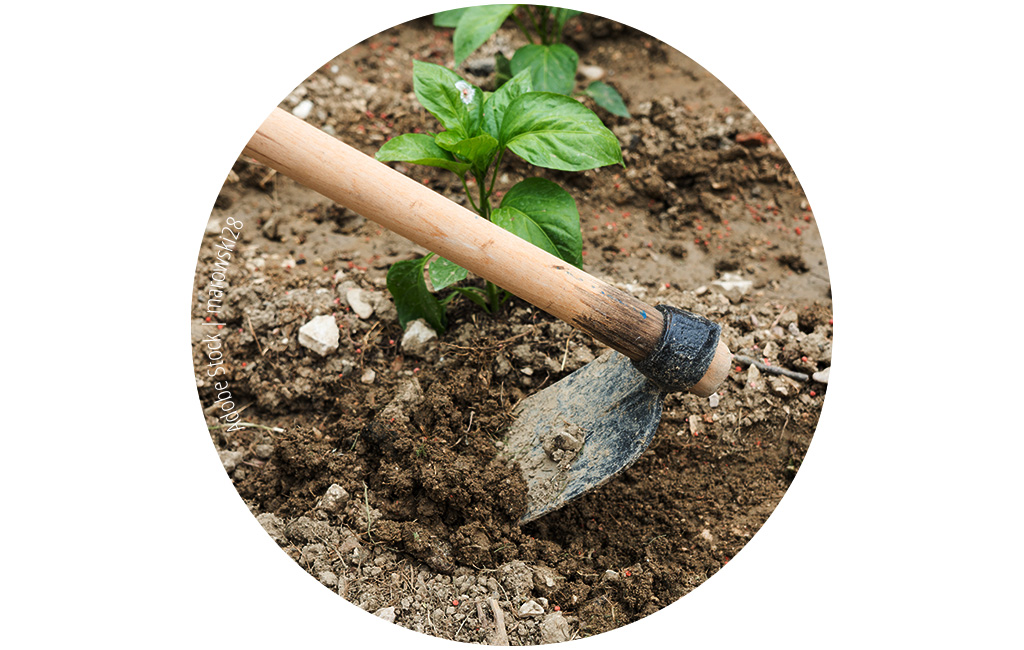
Hoe
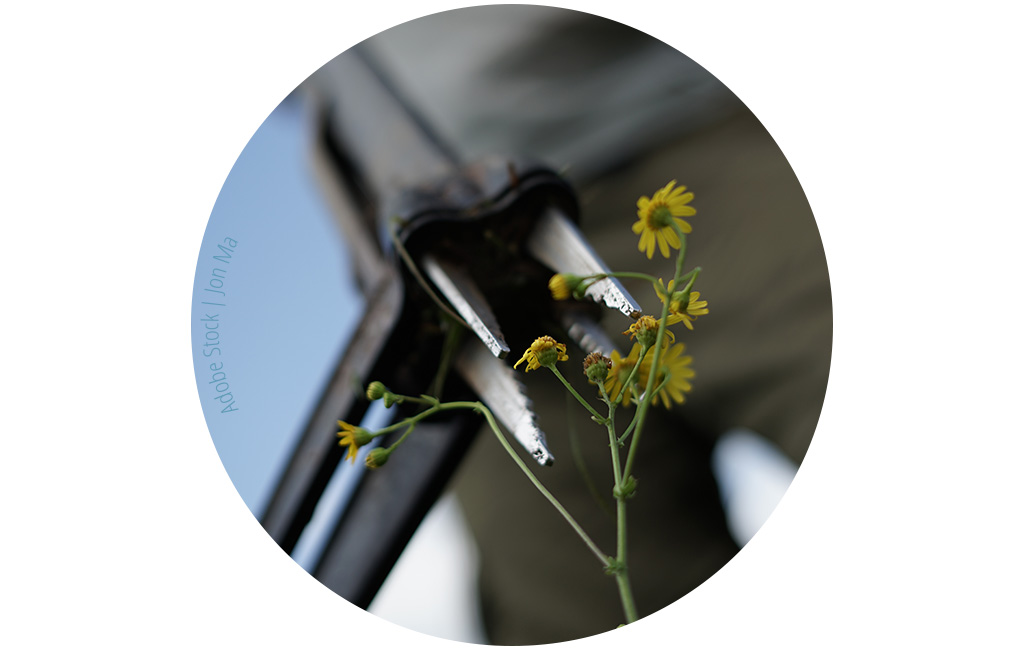
Weed puller
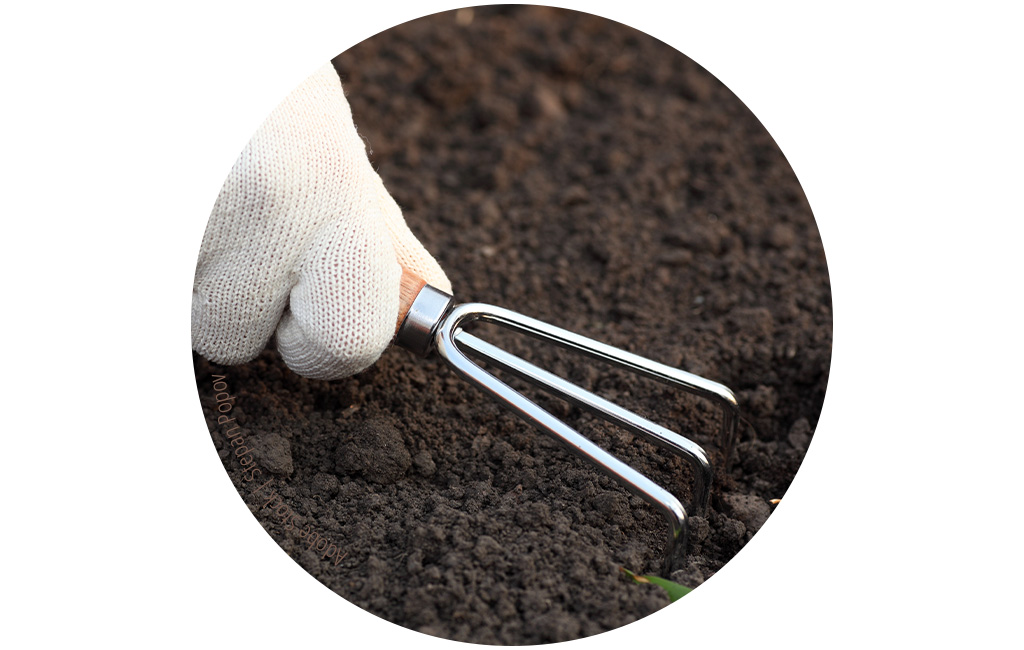
Garden claw

Joint scraper
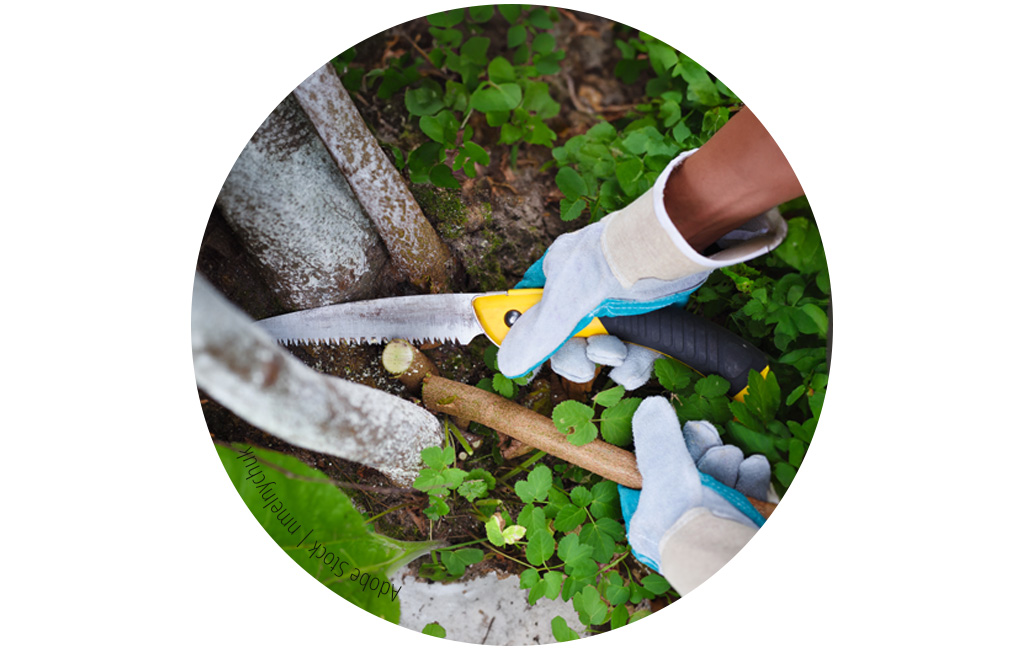
Garden knife
For root weeds, such as dandelions, a garden knife is the most suitable tool. With the knife, you can easily stab into the soil near the root and remove the weed effortlessly. Wildflowers, whose roots do not penetrate deeply into the soil, can be easily removed from a bed using a hoe or garden claw. While the hoe works more superficially, the garden claw can remove deeper-rooted weeds.
With the joint scraper, you can easily scrape unwanted weeds from gaps. Moss can also be effectively removed with it. This will quickly make the joints between your garden slabs or cobblestones weed-free again.
Helpful Einhell devices
If the above two methods for weed control are not an option for you, we have suitable Power X-Change devices that can actively support you in the fight against weeds. Our Einhell Cordless Grout Cleaner GC-CC 18 Li is the perfect helper for removing deposits such as moss, lichens, or green algae from the joints of your paving stones. Simply insert a Power X-Change battery, and it mechanically removes weeds through the rotation of its brush, protecting both the paving stones and the environment.
You can find more information about the Einhell Cordless Joint Cleaner in a separate blog post.
After using the joint cleaner, you can easily collect the remnants of moss or other wild plants with the Einhell Cordless Push Sweeper TE-SW 18/610 Li. The two high-quality brushes of the battery-powered machine thoroughly sweep the uprooted weeds from hard surfaces into the 20-litre collection container.
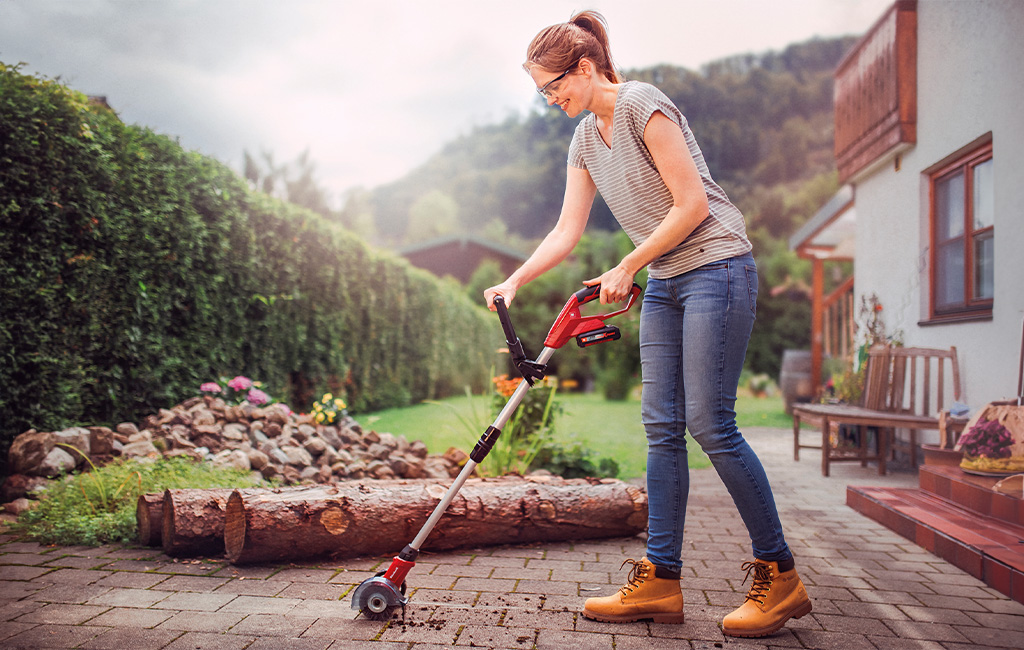
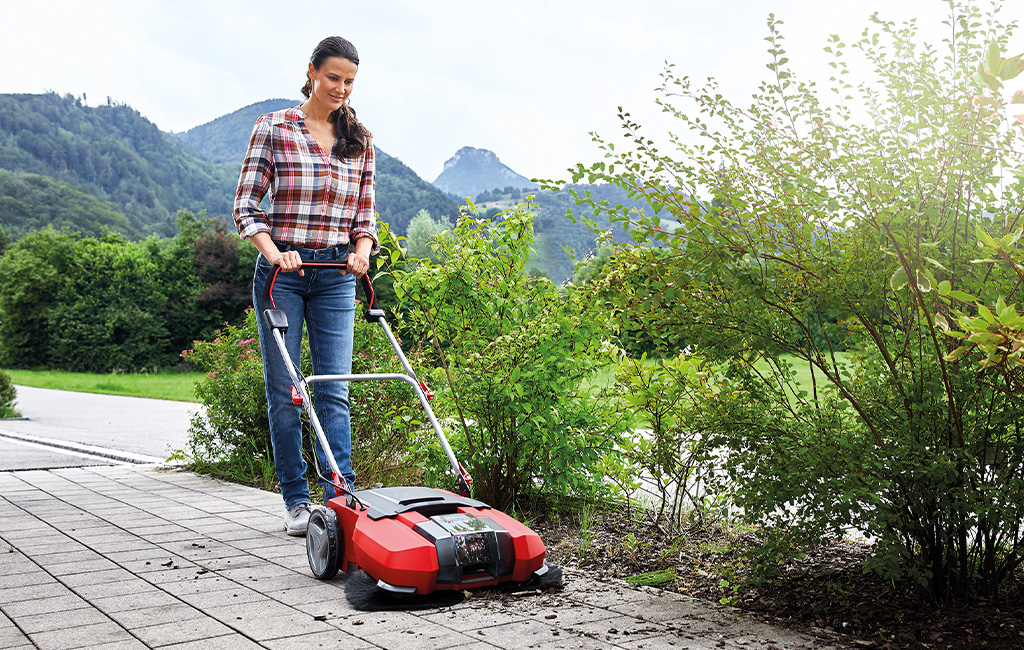
With the Einhell Cordless Surface Brush PICOBELLA 18/215, you can thoroughly remove lichens or moss from other areas of your garden, such as a wooden deck or stone tiles. The SOFT brush is best suited for wood, while the ULTRA brush is ideal for stone. In combination with a continuous water supply, which is possible via the hose connection directly on the device, unwanted greenery can be removed even more easily. Both brushes are available separately for the PICOBELLA.
To apply weed killers and lawn fertilizers in your garden, you can use our pressure sprayers, which distribute the respective product evenly over the weeds. For larger areas, our Einhell Cordless Pressure Sprayer GE-WS 18/75 Li is suitable, while for smaller applications, our Einhell Cordless Pressure Sprayer GE-WS 18/10 Li is ideal. Both devices are powered by an Einhell Power X-Change battery and can hold between one and 7.5 litres of liquid in their tanks. The spray nozzle can be adjusted according to the application area.
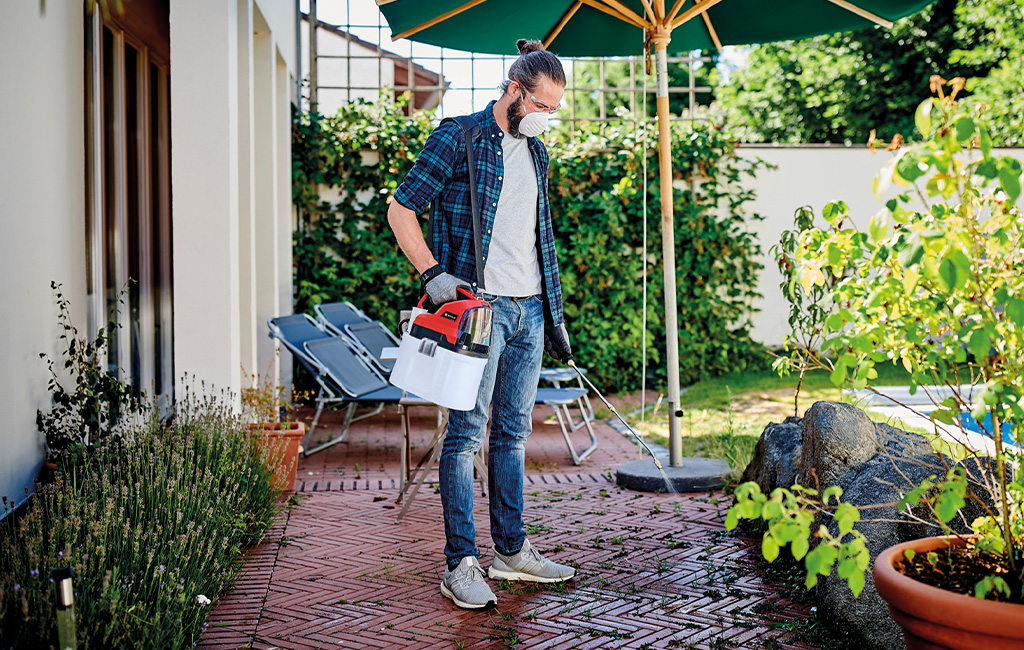
Conclusion
To effectively combat weeds in your yard and garden, there are many methods available. Whether using heat or brute force, each type of weed removal has its pros and cons. Having a battery-powered helper on hand can definitely be beneficial. Additionally, you could combine multiple methods: first, pour hot water on the weeds, which already destroys their cell structure in the first step, and then pull them out using a hoe, garden knife, or the Einhell battery-powered joint cleaner.
However, one thing must be remembered: weeds always come back. So, stay vigilant and remove growing seedlings as quickly and regularly as possible. This is the best way to maintain a weed-free garden.











